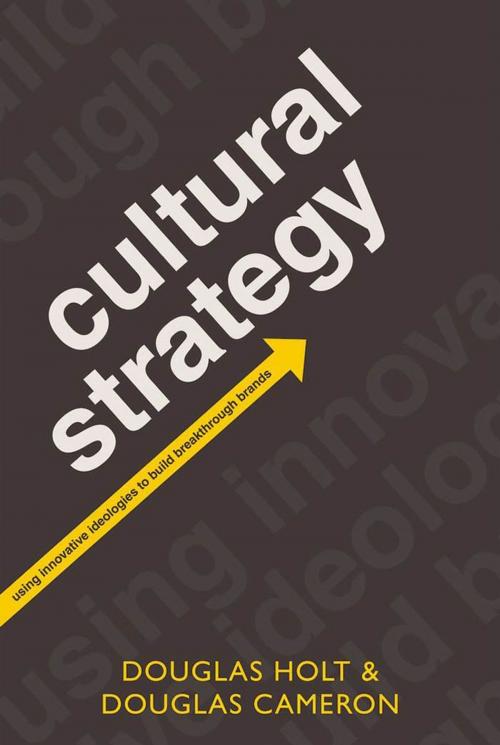Cultural Strategy:Using Innovative Ideologies to Build Breakthrough Brands
Using Innovative Ideologies to Build Breakthrough Brands
Nonfiction, Social & Cultural Studies, Social Science, Cultural Studies, Popular Culture, Business & Finance| Author: | Douglas Holt, Douglas Cameron | ISBN: | 9780191615207 |
| Publisher: | OUP Oxford | Publication: | October 28, 2010 |
| Imprint: | OUP Oxford | Language: | English |
| Author: | Douglas Holt, Douglas Cameron |
| ISBN: | 9780191615207 |
| Publisher: | OUP Oxford |
| Publication: | October 28, 2010 |
| Imprint: | OUP Oxford |
| Language: | English |
Market innovation has long been dominated by the worldview of engineers and economists: build a better mousetrap and the world will take notice. But there's another important way to build new businesses: with innovative ideologies rather than innovative mousetraps. Consider Coca-Cola, Nike, Jack Daniel's, Marlboro, Starbucks, Corona, Oprah, The Body Shop: all built with innovative ideologies. Further many "better mousetraps" are much more compelling to consumers when bundled withinnovative ideologies; consider BMW, Apple, and Whole Foods.Cultural Strategy provides a step-by-step guide for managers and entrepreneurs to build businesses in this simple but effective way. Holt and Cameron analyse a series of classic cases that relied on these bold, innovative strategies: Nike, Marlboro, Starbucks, Jack Daniels, vitaminwater, and Ben & Jerry's. They then demonstrate how the theory works as an actionable strategy model, drawing upon their consulting work. They show how cultural strategy takes start-up brands into themass market (Fat Tire beer), overcomes "better mousetraps" wars in a technology driven category (ClearBlue pregnancy test), effectively challenges a seemingly insurmountable incumbent (FUSE music channel vs MTV), and develops a social innovation (The Freelancers Union).Holt and Cameron also describe the best organizational model for pursuing this approach, which they term "the cultural studio". The book demonstrates that the top consumer marketing companies are consistently poor at this type of innovation because they rely on an antithetic organization structure, what the authors term "the brand bureaucracy". To succeed at cultural innovation requires not only a very different approach to strategy, but a new way of organizing as well.
Market innovation has long been dominated by the worldview of engineers and economists: build a better mousetrap and the world will take notice. But there's another important way to build new businesses: with innovative ideologies rather than innovative mousetraps. Consider Coca-Cola, Nike, Jack Daniel's, Marlboro, Starbucks, Corona, Oprah, The Body Shop: all built with innovative ideologies. Further many "better mousetraps" are much more compelling to consumers when bundled withinnovative ideologies; consider BMW, Apple, and Whole Foods.Cultural Strategy provides a step-by-step guide for managers and entrepreneurs to build businesses in this simple but effective way. Holt and Cameron analyse a series of classic cases that relied on these bold, innovative strategies: Nike, Marlboro, Starbucks, Jack Daniels, vitaminwater, and Ben & Jerry's. They then demonstrate how the theory works as an actionable strategy model, drawing upon their consulting work. They show how cultural strategy takes start-up brands into themass market (Fat Tire beer), overcomes "better mousetraps" wars in a technology driven category (ClearBlue pregnancy test), effectively challenges a seemingly insurmountable incumbent (FUSE music channel vs MTV), and develops a social innovation (The Freelancers Union).Holt and Cameron also describe the best organizational model for pursuing this approach, which they term "the cultural studio". The book demonstrates that the top consumer marketing companies are consistently poor at this type of innovation because they rely on an antithetic organization structure, what the authors term "the brand bureaucracy". To succeed at cultural innovation requires not only a very different approach to strategy, but a new way of organizing as well.















